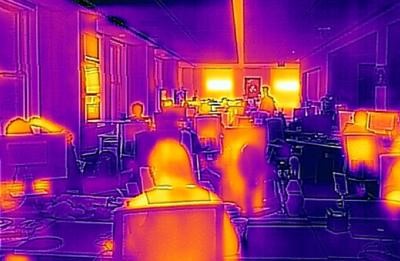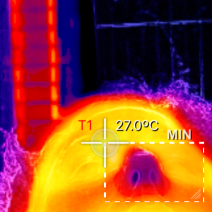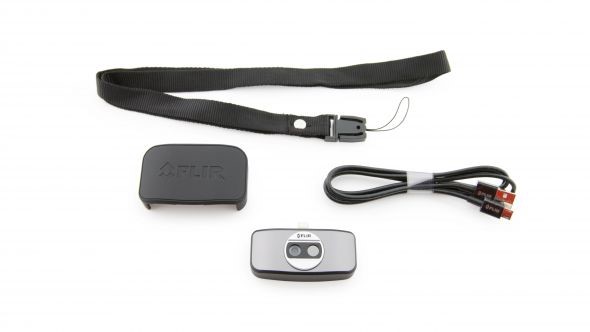Using Citizen Science to Engage Preservice Elementary Educators in Scientific Fieldwork
Journal of College Science Teaching—November/December 2016 (Volume 46, Issue 2)
By Catherine M. Scott
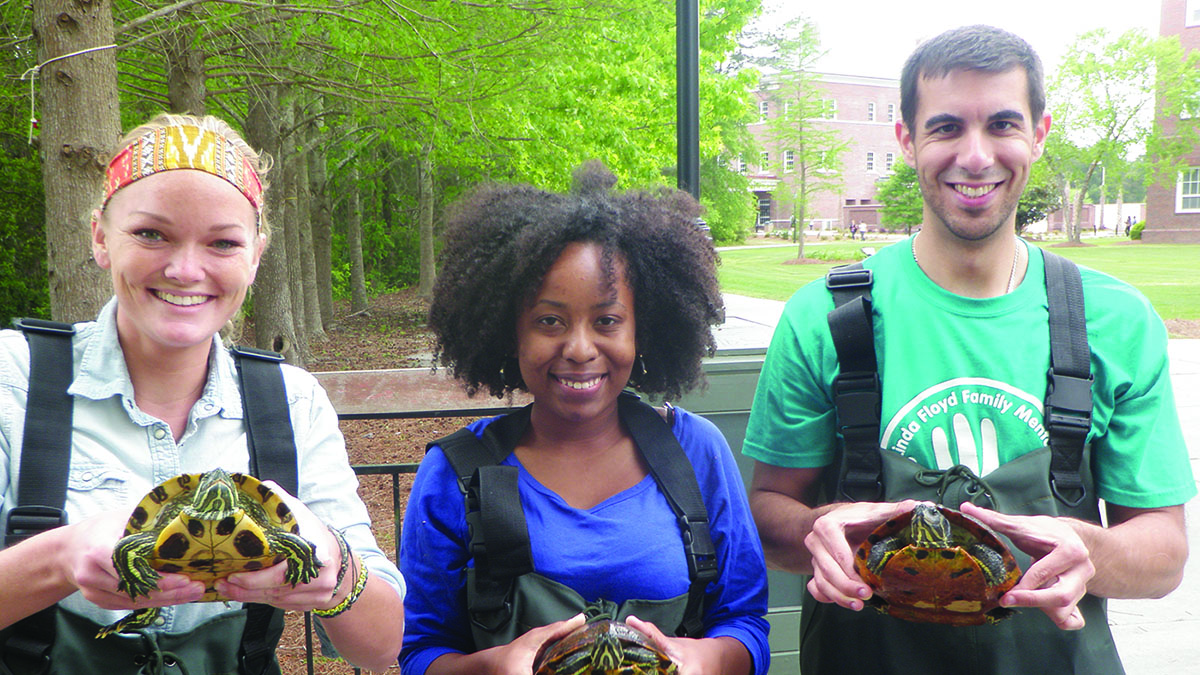
Preservice elementary teachers’ lack of confidence in teaching science is an ongoing concern. Only 29% of elementary teachers in the field felt “very well prepared to teach life science,” according to the National Survey of Science and Mathematics Education. Research has suggested that bridging informal and formal science education can improve preservice educators’ attitudes toward science and science teaching and expose them to innovative teaching methods. For this study, a citizen science-based research project was implemented in an elementary science methods course. Students in the course collected data on turtles in the campus pond, then uploaded their data to a citizen science database focusing on reptiles. It was found that participation in the project not only increased participants’ content knowledge regarding citizen science and reptiles, but it also provided participants with (a) a sense of social responsibility, (b) ownership of the project, and (c) a desire to teach children about the importance of the local environment. Implications for instruction are discussed.
Preservice elementary teachers’ lack of confidence in teaching science is an ongoing concern. Only 29% of elementary teachers in the field felt “very well prepared to teach life science,” according to the National Survey of Science and Mathematics Education. Research has suggested that bridging informal and formal science education can improve preservice educators’ attitudes toward science and science teaching and expose them to innovative teaching methods. For this study, a citizen science-based research project was implemented in an elementary science methods course.
Preservice elementary teachers’ lack of confidence in teaching science is an ongoing concern. Only 29% of elementary teachers in the field felt “very well prepared to teach life science,” according to the National Survey of Science and Mathematics Education. Research has suggested that bridging informal and formal science education can improve preservice educators’ attitudes toward science and science teaching and expose them to innovative teaching methods. For this study, a citizen science-based research project was implemented in an elementary science methods course.
Learning about the landscape around you
By Peggy Ashbrook
Posted on 2016-10-31
 Flying across the country to the conference for the National Association for the Education of Young Children brought many different landscapes into view through the plane window. I saw ridges, meandering rivers and river-carved canyons, heavily wooded areas, hills, mirror-like lakes, flat regions that went on and on, and sharp snow covered peaks. Human impact on the land appeared as long straight and curved lines, circles, crazy quilt patches, and structures of many shapes including skyscrapers, railway lines, wind turbines, flat roofs, single structures and clusters of structures. The sky changed from clear to cloudy.
Flying across the country to the conference for the National Association for the Education of Young Children brought many different landscapes into view through the plane window. I saw ridges, meandering rivers and river-carved canyons, heavily wooded areas, hills, mirror-like lakes, flat regions that went on and on, and sharp snow covered peaks. Human impact on the land appeared as long straight and curved lines, circles, crazy quilt patches, and structures of many shapes including skyscrapers, railway lines, wind turbines, flat roofs, single structures and clusters of structures. The sky changed from clear to cloudy.
How can we help preschool children explore how the landscape and natural resources affect how their community’s infrastructure develops? Should we? National Council for the Social Studies describes the benefits of learning about geography: “Geographic inquiry helps people understand and appreciate their own place in the world, and fosters curiosity about Earth’s wide diversity of environments and cultures” (NCSS, pg 40). How can preschool educators provide experiences that will later help children think about the landscape and ask questions to learn more to be able to make informed choices as adults?
 We can begin with becoming very familiar with the area around our own school or home, talking about its slopes, vegetation, and structures. Help children take an inventory of the natural features of their play area counting how many: trees or other plants, rocky areas, puddles, grass lawns, mulched areas, steep slopes and gentle inclines, and other elements. An inventory can include human structures such as fences, tables, and climbing structures. As they count and record how many, children can sort the features into groups, natural or human-made. Ask children what elements they would add, if possible.
We can begin with becoming very familiar with the area around our own school or home, talking about its slopes, vegetation, and structures. Help children take an inventory of the natural features of their play area counting how many: trees or other plants, rocky areas, puddles, grass lawns, mulched areas, steep slopes and gentle inclines, and other elements. An inventory can include human structures such as fences, tables, and climbing structures. As they count and record how many, children can sort the features into groups, natural or human-made. Ask children what elements they would add, if possible.
Walking field trips to the field or building next door will reveal additional features–the spot with the most grasshoppers or a ditch with cat tail plants to pick for their fuzzy heads, and buildings made of stone containing fossils or windows with a glimpse into a store. Children’s reasons for valuing a particular location may differ from adults’ reasons. A walking field trip can incorporate a mapping experience (Ashbrook). As children grow older the walks can go further, expanding children’s understanding of their place.
Ashbrook, Peggy. 2011. The Early Years: A Sense of Space. Science and Children. 49 (1): 30-31
National Council for the Social Studies (NCSS), The College, Career, and Civic Life (C3) Framework for Social Studies State Standards: Guidance for Enhancing the Rigor of K-12 Civics, Economics, Geography, and History (Silver Spring, MD: NCSS, 2013).
Making the Most of Class Time
By Mary Bigelow
Posted on 2016-10-31
 At the beginning of class, it takes my students a long time to settle down. We are wasting time as I try to get their attention. Any suggestions? –T., Maryland
At the beginning of class, it takes my students a long time to settle down. We are wasting time as I try to get their attention. Any suggestions? –T., Maryland
To take advantage of the class time we have, it helps to have an established routine so students know what to do when they come into the classroom.
One method I found effective was posting an agenda. When the students entered the lab, they saw what the learning goals were, what activities they were going to work on in class, what needed to be turned in, and what materials they needed (pencil, science notebook, paper, and so on). As they assembled these materials and put their other things away, they still had a little time to socialize, which is important to middle schoolers. When we started the lesson or lab investigation, they had their materials in order.
Another suggestion is to have a warm-up or bellringer activity. Students should get started right away, even before the bell actually rings. The students are focused while you take attendance, distribute materials, or return assignments. Some examples include
- Answer a question about yesterday’s work or another related topic
- Respond to a statement or visual to uncover misconceptions or activate prior knowledge
- Complete a vocabulary entry with a graphic organizer
- Do a “quick write” with several sentences on a theme or topic
- Do a “quick draw” on a theme or topic
You can tell the students to quiet down over and over every day. Or you can help students take responsibility for using time purposefully through guidance and modeling (and persistence).
 At the beginning of class, it takes my students a long time to settle down. We are wasting time as I try to get their attention. Any suggestions? –T., Maryland
At the beginning of class, it takes my students a long time to settle down. We are wasting time as I try to get their attention. Any suggestions? –T., Maryland
Just as its subtitle says, this important book aims to reshape your approach to teaching and your students’ way of learning.
Just as its subtitle says, this important book aims to reshape your approach to teaching and your students’ way of learning.
Time for science?
By Mary Bigelow
Posted on 2016-10-30
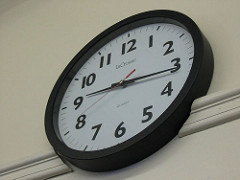 When I was student teaching, I had some really good science lessons for second-graders that lasted about an hour. But now I have only a half-hour for science each day. I need suggestions for shorter lessons. – C., Colorado
When I was student teaching, I had some really good science lessons for second-graders that lasted about an hour. But now I have only a half-hour for science each day. I need suggestions for shorter lessons. – C., Colorado
I’m glad to hear that your school schedules science daily. In many elementary schools, science and social studies have been deemphasized, in favor of reading and math.
- If your schedule is flexible enough, “borrow” time from another subject to complete the activity, making up the time later.
- Divide the activity into several parts, perhaps making observations or collecting data one day and doing the analysis or summarization later. (You may have to include time to review on the second day)
- Use time during writing instruction for students to summarize the lesson in their science notebooks.
- Use nonfiction books on the topic during reading instruction, read-alouds, or personal reading to provide background prior to or after the science lesson.
Each month, NSTA’s Science & Children publishes features to help educators craft additional age-appropriate lessons:
- Teaching with Trade Books explores a concept with recommended books and lessons. For example, the September 2016 topic is “What We Do With Ideas.”
- The Early Years features easy-to-use ideas for developing student interest and curiosity. The July 2016 topic is “Discovering Through Deconstruction.”
- Articles related to the monthly theme include lesson plans, connections to the Next Generation Science Standards, and related materials.
Even at the secondary level, the class period is often not long enough to complete an investigation or activity. And I’ve never heard science teachers say they had too much time!
Photo: https://www.flickr.com/photos/cgc/7080721/sizes/q/
Tackling Scientific Problems and Pitching Engineering Solutions at #NSTA16 Columbus
By Lauren Jonas, NSTA Assistant Executive Director
Posted on 2016-10-29
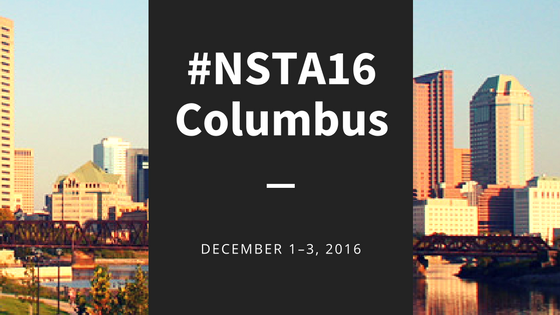
This December, the National Science Teachers Association (NSTA) will feature a special strand “Tackling Scientific Problems and Pitching Engineering Solutions” at our 2016 Area Conference on Science Education, in Columbus, Ohio, December 3-5. We need this strand, because the challenges facing society are both complex and interdisciplinary. Issues like water availability/quality, climate change, renewable energies, food shortages, the need for improved transportation/city infrastructure, and issues in the biomedical realm require clearly defining problems that can be solved through design. Students address these issues by implementing the practices of scientists and engineers, including developing explanations, designing and building models, and creating solutions. Students must be able to link the domains of science and teachers must teach students in a learnable manner that reaches multiple grade levels, increasing in depth and sophistication.
 The featured presentation for this strand will be “Sowing the Seeds of STEM,” on Friday, December 2, from 12:30 PM – 1:30 PM at the Greater Columbus Convention Center, B130. Presenter Kimberly Clavin (Pillar Technology: Columbus, OH) tells us that today’s world delivers advanced technologies at lightning speeds—and with that comes an exponential growth in STEM fields. How can educators prepare middle school and high school students without a background in the emerging fields? Learn various strategies to attract and grow a diverse range of students into these in-demand career fields.
The featured presentation for this strand will be “Sowing the Seeds of STEM,” on Friday, December 2, from 12:30 PM – 1:30 PM at the Greater Columbus Convention Center, B130. Presenter Kimberly Clavin (Pillar Technology: Columbus, OH) tells us that today’s world delivers advanced technologies at lightning speeds—and with that comes an exponential growth in STEM fields. How can educators prepare middle school and high school students without a background in the emerging fields? Learn various strategies to attract and grow a diverse range of students into these in-demand career fields.
Below is a small sampling of other sessions on this topic:
- Human-Centered Engineering Design: The Key to STEM
- Developing Scientific Arguments: Claims and Stories in the Graphs
- Learning Ecosystem Management with NGSS: Developing Solutions to Invasive Species Using Science and Engineering Practices
- EiE Ohio: Building 21st-Century STEAM Learners
- Impactful Learning: Engineering to Serve Special Needs Students—The Win-Win Scenario
- Teaching Engineering in Grades K–3
 Want more? Browse the program preview, or check out more sessions and other events with the Columbus Session Browser/Personal Scheduler. Follow all our conference tweets using #NSTA16, and if you tweet, please feel free to tag us @NSTA so we see it!
Want more? Browse the program preview, or check out more sessions and other events with the Columbus Session Browser/Personal Scheduler. Follow all our conference tweets using #NSTA16, and if you tweet, please feel free to tag us @NSTA so we see it!
The mission of NSTA is to promote excellence and innovation in science teaching and learning for all.
Future NSTA Conferences
2017 National Conference
2017 STEM Forum & Expo
Follow NSTA

Only at NSTA Minneapolis: #ToysForNerds
By Lauren Jonas, NSTA Assistant Executive Director
Posted on 2016-10-29
Uh oh, someone hold me back #toysfornerds #ONLYatNSTA pic.twitter.com/AdKmAvsfjE
— Sara Kobilka (@SaraKDM) October 28, 2016
"A zombie got my leg" #STEM challenge to create a prosthetic leg #nsta2016 #nsta16 @TeachNgineering pic.twitter.com/EP5JGQzr5r
— Matt Nupen (@mattnupen) October 29, 2016
#ONLYatNSTA I DO love being a science teacher! pic.twitter.com/YQf6Bp74eT
— Stephanie Francis (@tagteacher2002) October 27, 2016
#scienceteachers change the world one “Why?” at a time! @ainissaramirez tells us how #OnlyAtNSTA pic.twitter.com/jQteaj5OVz
— Lauren Jonas (@LaurenE_Jonas) October 27, 2016
@SPPS_Science @SPPS_News Jim Schrankler being recognized as a Presidential Award Finalist at MNSTA #OnlyAtNSTA pic.twitter.com/TKhnu8PTpY
— Sarah Bosch (@sbosch_spps) October 27, 2016
#ONLYatNSTA pic.twitter.com/HgTSQXp8w3
— NatSciTeachAssoc (@NSTA) October 29, 2016
SMHS in da house!#onlyatnsta#sciencerocks pic.twitter.com/yojxhIgA0z
— Dawn Paurus (@dawn_paurus) October 28, 2016
#nsta16 what’s more fun than teaching science??!! Learning to teach science with all your fav science teachers! #knightnation pic.twitter.com/bPNRL9FYrn
— Ms. Volkmann (@ScienceMsV) October 28, 2016
That time you happened on forensic clues on your way to an #NSTA16 session. #OnlyAtNSTA pic.twitter.com/0CWZLE66Xr
— Claire Reinburg (@C_Reinburg) October 27, 2016
Prism glasses and a light show. #onlyatnsta @KatieAEnglund @Shellygilson1 pic.twitter.com/SpXmdDAywm
— Courtney Qualley (@QualleyCourtney) October 28, 2016
#OnlyAtNSTA Can I play with clay and learn science! pic.twitter.com/3LOozv9fmL
— Barbara Wendt (@WendtScience) October 28, 2016
#onlyatnsta Prof. Tubesing lights up ASEE engineering day!! pic.twitter.com/gxGwtBgUao
— Deb Besser (@Deb_Besser) October 28, 2016
Day 2 of the science teachers conference in Minneapolis #NSTA #OnlyAtNSTA #NSTA16 pic.twitter.com/4v8SdxvoVo
— Beth Hamilton (@deafsciencebeth) October 28, 2016
Kazoo engineering expert #carolinaredcarpet #OnlyAtNSTA pic.twitter.com/F1gqWvtXMM
— Sara Kobilka (@SaraKDM) October 28, 2016
New & old STEM Forum members collaborate as we plan out 2017 STEM Forum. Good times and plans #NSTA16 #OnlyAtNSTA pic.twitter.com/nU2NdyAdfO
— Jennifer Williams (@ScienceJennifer) October 27, 2016
Red kneed tarantula #ONLYatNSTA pic.twitter.com/sK829MXmYC
— tim ronhovde (@mctreehugger) October 28, 2016
Welcome to Twitter! #OnlyAtNSTA https://t.co/0okZgDSnLD
— Sarah Bosch (@sbosch_spps) October 28, 2016
#OnlyAtNSTA @ZWSTEAMRoller @mikesavage1 pic.twitter.com/GIcXRW2OeQ
— Sara Welu (@Sdub1078) October 28, 2016
Reverse engineering a kazoo. Let’s get destructive!! How can I break this? The dark side is so tempting and encouraged! #OnlyAtNSTA pic.twitter.com/GAoxEDvxnF
— Sara Kobilka (@SaraKDM) October 28, 2016
In a highly unscientific survey it has been decided that the cutest dog in the world is #ONLYatNSTA pic.twitter.com/mXak7gZGJm
— NatSciTeachAssoc (@NSTA) October 6, 2016
Reverse engineering a kazoo. Let’s get destructive!! How can I break this? The dark side is so tempting and encouraged! #OnlyAtNSTA pic.twitter.com/GAoxEDvxnF
— Sara Kobilka (@SaraKDM) October 28, 2016
Won $50 at the door prize at the first session ! #onlyatNSTA Thanks #vernier ! #STEM #scied #NSTA pic.twitter.com/VmanbeSNIv
— Kim Nesvik (@knesvik1) October 28, 2016
Learning to use google forms for assessment from @kamelgaard at #NSTA16 #NSTA2016 #OnlyAtNSTA pic.twitter.com/cipuYLZGkw
— Matt Nupen (@mattnupen) October 28, 2016
MVPS Science teachers at NSTA in Mlps. Great day of professional learning. #mvteachers #mvpsrocks pic.twitter.com/BCoRRNabD5
— MV Curriculum (@MV_CIA) October 27, 2016
I want this!!! Saw this atomic model at the exhibit @FreyScientific #NSTA16 #NSTA #OnlyAtNSTA pic.twitter.com/BcArsvYY2Q
— Beth Hamilton (@deafsciencebeth) October 28, 2016
Happy to be with family in Minneapolis. #onlyatNSTA #NSTA16 @NSTA# @bflyguy @JeanTushie pic.twitter.com/vkknC0rAxE
— Christine Anne Royce (@caroyce) October 27, 2016
Designing on a seriously deficit budget #onlyatnsta pic.twitter.com/u0b7uRk4Ox
— Rhonda Fode (@CoachFode) October 27, 2016
…and then I won $75 to use on my class!!!#OnlyatNSTA pic.twitter.com/MnYn837y7M
— Courtney Qualley (@QualleyCourtney) October 27, 2016
Conference exp part 1: why yes TSA they are children’s books & 150 paper helicopters. I’m a science teacher #onlyatNSTA @nsta #NSTA16
— Christine Anne Royce (@caroyce) October 26, 2016
We are looking good #ONLYatNSTA pic.twitter.com/wAQK5rwomx
— Jodi Peterson (@stemedadvocate) October 28, 2016
Won a Starbucks gift card for creating the loudest kazoo! Me, loud, who’d have thunk it?!? #engineeringwinner #STEAM #OnlyAtNSTA pic.twitter.com/CEjgrxNsHz
— Sara Kobilka (@SaraKDM) October 28, 2016
Hanging out with Joe Mauer at NSTA. #ONLYatNSTA #NSTA2016 pic.twitter.com/JrnKpINiZn
— Scot Johnson (@scotjohn30) October 28, 2016
Great PD!!! #OnlyAtNSTA pic.twitter.com/Pi3mP77BiT
— Jacey Brown (@brown_ja3) October 28, 2016
#OnlyAtNSTA Can I read a science paper from 1953 on DNA, and build what they discovered with pool noodles, magnets, and 3D printers-😁 pic.twitter.com/HpJjO4vvKc
— Barbara Wendt (@WendtScience) October 28, 2016
Thank you Victor Sampson for leading a great un-conference discussions on argument-driven inquiry. #ONLYatNSTA @nsta pic.twitter.com/JZVWYbeIXS
— Kim Stilwell (@KimStilwellNSTA) October 28, 2016
Met my #sciencesuperhero and got some smart advice today. THANK YOU @ainissaramirez pic.twitter.com/mDBgIliNZu
— Lauren Jonas (@LaurenE_Jonas) October 28, 2016
Hands on digestion #onlyatnsta pic.twitter.com/8w9F0O8Dyr
— Rhonda Fode (@CoachFode) October 27, 2016
Gotta love a hands-on engineering session where cheers erupt throughout the design process. #ONLYatNSTA pic.twitter.com/5cjEoFAuPR
— Sara Kobilka (@SaraKDM) October 28, 2016
When the presenter happens to use a book you wrote in her session. #surprise! #OnlyatNSTA #NSTA16 #NGSS #ece #STEMed @charlesbridge pic.twitter.com/XITOA4gPAt
— Ruth Spiro (@RuthSpiro) October 28, 2016
A great start to the NSTA area conference #ONLYatNSTA And a big thank you to NSTA and MN’s local planning team pic.twitter.com/bZvjwnRGQt
— Steve Walvig (@SteveWalvig) October 27, 2016
The mission of NSTA is to promote excellence and innovation in science teaching and learning for all.
2016 Area Conferences
2017 National Conference
2017 STEM Forum & Expo
Follow NSTA
Bring More Everyday Engineering into your classroom
By Carole Hayward
Posted on 2016-10-28
A new book by NSTA Press helps middle school teachers incorporate engineering into their science classrooms.
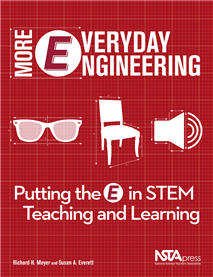 More Everyday Engineering: Putting the E in STEM Teaching and Learning is a follow-up volume to 2012’s Everyday Engineering. The book is based on the “Everyday Engineering” column in NSTA’s middle school journal Science Scope and captures how engineering is required to make items from ice cubes to bandages. Authors Richard H. Moyer and Susan A. Everett do an excellent job at providing lessons that illustrate how “engineering is the process we use to develop solutions to the problems humans face.”
More Everyday Engineering: Putting the E in STEM Teaching and Learning is a follow-up volume to 2012’s Everyday Engineering. The book is based on the “Everyday Engineering” column in NSTA’s middle school journal Science Scope and captures how engineering is required to make items from ice cubes to bandages. Authors Richard H. Moyer and Susan A. Everett do an excellent job at providing lessons that illustrate how “engineering is the process we use to develop solutions to the problems humans face.”
The activities are designed to give students an in-depth understanding of three different aspects of engineering—designing and building; reverse engineering to learn how something works; and constructing and testing models. Moyer and Everett use the 5E learning-cycle format in each activity and focus on items that students are familiar with such as sunglasses and speakers and earbuds.
Chapter 4, “An In-depth Look at 3-D,” is particularly relevant to middle school students who have grown up surrounded by the latest 3-D technology in video games, televisions, and movies. The activity worksheet in that chapter focuses on vision and perception as a means to investigating 3-D. Each of the chapters in the book provide helpful teacher background information, historical context, a materials list, and safety information.
The Next Generation Science Standards (NGSS) stress the importance of incorporating engineering and technology into the science classroom. This book can help teachers connect science and engineering, and can serve as a useful tool for engineers leading outreach activities, leaders of after-school and summer enrichment programs, and parents. Most importantly, the book helps provide opportunities for students “to deepen their understanding of science by applying their developing scientific knowledge to the solution of practical problems” (see NGSS, Appendix A).
This book is also available as an e-book.
Fall for These Savings on NSTA Press Books!
Between now and November 1, 2016, save $15 off your order of $75 or more of NSTA Press books or e-books by entering promo code BKS16 at checkout in the online Science Store. Offer valid only on orders placed of NSTA Press books or e-books on the web and may not be combined with any other offer.
Follow NSTA
A new book by NSTA Press helps middle school teachers incorporate engineering into their science classrooms.
FLIR ONE Thermal Imaging Camera
By Edwin P. Christmann
Posted on 2016-10-27
Introduction
The imaginations of middle school and high school students will be fully engaged in the science classroom with the FLIR ONE Thermal Imaging Camera. This camera’s thermal capabilities allow students to explore things invisible to the human eye. For example, students can use the camera to investigate the world of thermodynamics in a manner that parallels the excitement and mystery evoked by sitting on the edge of your seat during a cutting-edge science fiction movie.
How does it work?
What we can see with naked eye is restricted to visible light. Therefore, when you consider the electromagnetic spectrum (EM), which encompasses radio waves, microwaves, infrared light, visible light, ultraviolet light, x-rays, and gamma rays, it becomes evident that what we can see with our eyes is limited. As an example, devices such as military night vision goggles make it possible to see images in the dark. In a similar way, the FLIR ONE Thermal Imaging Camera is a device for us to “see” beyond visible light.
Thermal-imaging cameras, like the FLIR ONE, can “see” heat signatures, which are converted to display variations of temperatures, e.g., How an icy soft drink contrasts with the flame on a candle. This is because all objects emit thermal energy and the hotter the object; the more energy given off by the object. The energy emitted is known as the “heat signature.” Hence, every object has a different heat signature; and it’s those signatures that are detected by thermal imagers like the FLIR ONE. Moreover, since thermal cameras are not concerned with visible light, regardless of lighting conditions, thermal cameras can detect the different heat signatures in a variety of situations. Therefore, images of temperature variations can be observed with this type of device.
FLIR ONE Thermal Imaging Camera Compatibility
The Thermal Camera is made for the iPhone and the iPad. It is very easy to use and, because no interface is needed, it is a snap to use in the classroom. Subsequently, teachers will have no problem having students connect the device for experiments. The first step, however, is load the free Vernier Thermal Analysis for FLIR ONE application, which is available for download on the iTunes App Store [https://itunes.apple.com/us/app/vernier-thermal-analysis-for/id1083139486?mt=8]. It requires iOS 9.0 or better and should be installed before connecting the camera to your device. The Vernier Thermal Analysis for FLIR ONE application is simple to access and takes only a few minutes to upload.
As explained in the iTunes store:
“Vernier Thermal Analysis for FLIR ONE allows you to mark up to four locations or regions on a thermal image. In a selected region, you can determine minimum, maximum, or average temperature. Graph temperature data live during an experiment, then export to our Graphical Analysis app for further analysis. Thermal image videos can also be exported to the Photos app.”
The Thermal Camera, in conjunction with the Thermal Analysis app, can do much more than simply detect heat. Students will also be able to record and graph live temperature data from up to four locations on an image. This will allow them to compare the temperature data between different locations during an experiment. Furthermore, each picture taken with this device will also simultaneously take a standard picture, providing greater detail of the image.
The FLIR ONE can be used across the science content areas (i.e., physics, chemistry, earth science, biology, etc.) and will definitely enhance the study of thermodynamics for students– especially for visual learners! Below are samples of links to ideas for classroom experiments:
Rubbing erasers, hands and ice: http://80.77.70.144/DocDownload/Assets/edu/T810113-en-US.pdf
Knife and wooden spoon: http://80.77.70.144/DocDownload/Assets/edu/T810111-en-US.pdf
Cups and clothes: http://80.77.70.144/DocDownload/Assets/edu/T810109-en-US.pdf
Conclusion
The FLIR ONE Thermal Camera is a new technology application that engages students into meaningful and exciting inquiry-based learning! Undoubtedly, this user-friendly device has a kaleidoscope of meaningful uses for 21st Century science classrooms! There is little doubt that its use will spawn creativity and heighten the interest of thermodynamics content for students!
Equipment and Cost:
Cost: $249
http://www.flir.com/flirone/ios/
http://www.vernier.com/products/sensors/temperature-sensors/flirone-ios/
Edwin P. Christmann is a professor and chairman of the secondary education department and graduate coordinator of the mathematics and science teaching program at Slippery Rock University in Slippery Rock, Pennsylvania. Anthony Balos is a graduate student and a research assistant in the secondary education program at Slippery Rock University in Slippery Rock, Pennsylvania.
Introduction
The imaginations of middle school and high school students will be fully engaged in the science classroom with the FLIR ONE Thermal Imaging Camera. This camera’s thermal capabilities allow students to explore things invisible to the human eye. For example, students can use the camera to investigate the world of thermodynamics in a manner that parallels the excitement and mystery evoked by sitting on the edge of your seat during a cutting-edge science fiction movie.
Working cooperatively
By Mary Bigelow
Posted on 2016-10-26
 I’m frustrated by my sixth graders. When they’re supposed to be working cooperatively, they are unfocused—it seems more like a social event. By middle school, shouldn’t students know how to work cooperatively? Or are they too immature? – G., Virgina
I’m frustrated by my sixth graders. When they’re supposed to be working cooperatively, they are unfocused—it seems more like a social event. By middle school, shouldn’t students know how to work cooperatively? Or are they too immature? – G., Virgina
Immaturity is not an excuse. I’ve seen wonderful cooperative learning taking place in kindergarten classes, with teacher guidance, modeling, and monitoring.
One might assume students have specific skill sets and experiences, but I’ve learned never to take anything for granted. If the students attended different elementary schools, their science backgrounds and the emphasis schools placed on science investigations will vary. You may have to teach (or remind) students what cooperative learning in science looks like.
Defining roles is a key component. Common roles in middle level science labs include group leader, presenter, data recorder, measurer, equipment manager, liaison/questioner, artist/illustrator, online researcher, timekeeper, and notetaker. Depending on the size of the groups, some roles can be combined.
It may help to have students define the roles, giving them ownership in the process. Ask, “What would a data recorder do?” (Students must answer without using the words data or recorder.) You can add suggestions, especially on safety. Job descriptions could be shared as posters, student-created videos, or put into students’ notebooks. Rotate roles periodically so all students have a chance to experience each one.
If some students lack polished interpersonal skills, start with brief, structured activities. Model cooperative behaviors and share examples of appropriate (and inappropriate) language.
To keep the groups focused and on-task, be sure students understand the purpose and the learning goals for the project or investigation and monitor them as they work.
Middle schoolers are capable of working cooperatively, and their enthusiasm is a bonus!
Photo: https://www.flickr.com/photos/xevivarela/4610711363/sizes/o/in/photostream/
 I’m frustrated by my sixth graders. When they’re supposed to be working cooperatively, they are unfocused—it seems more like a social event. By middle school, shouldn’t students know how to work cooperatively? Or are they too immature? – G., Virgina
I’m frustrated by my sixth graders. When they’re supposed to be working cooperatively, they are unfocused—it seems more like a social event. By middle school, shouldn’t students know how to work cooperatively? Or are they too immature? – G., Virgina
Immaturity is not an excuse. I’ve seen wonderful cooperative learning taking place in kindergarten classes, with teacher guidance, modeling, and monitoring.



